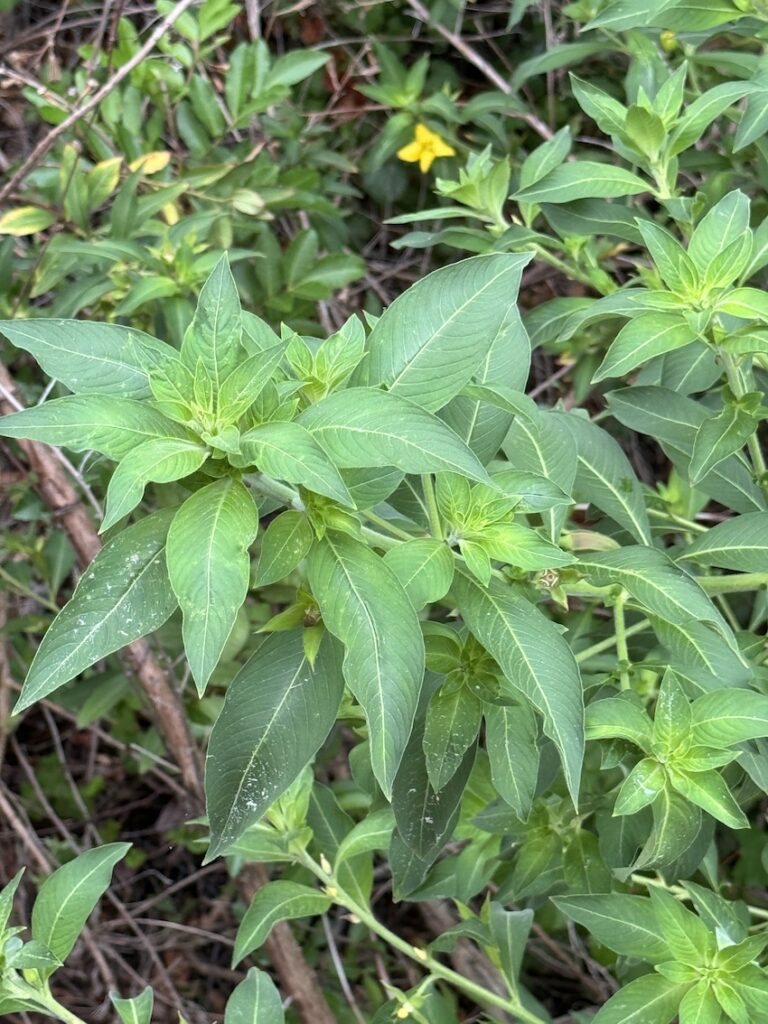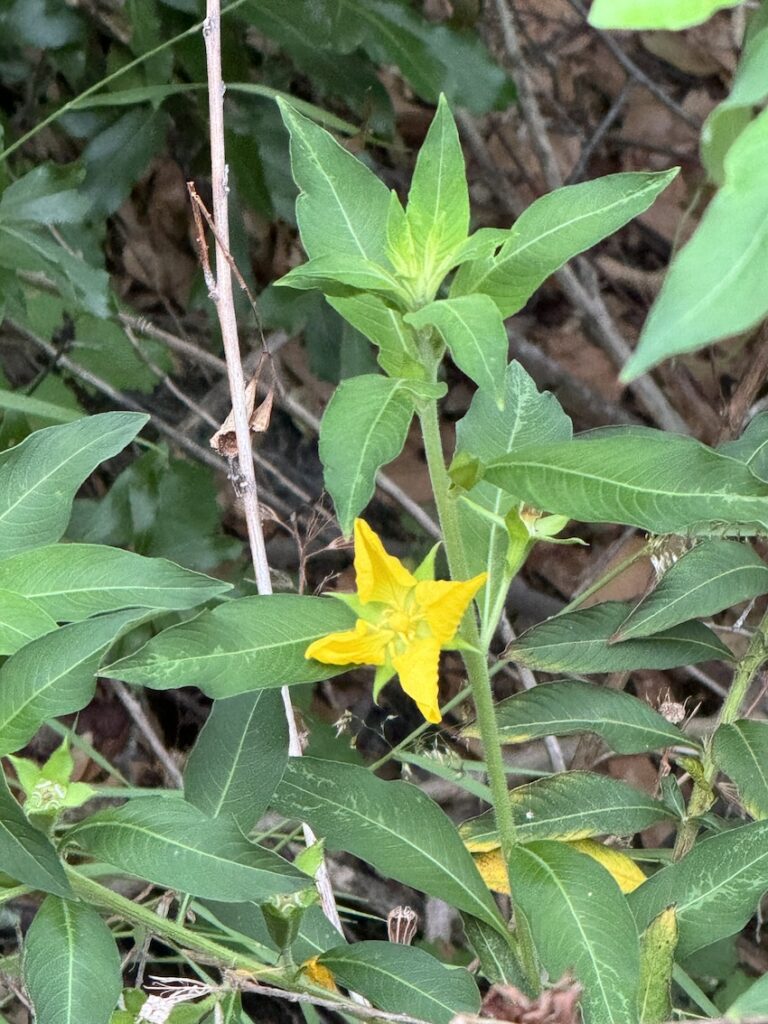FLOWERS: Solitary, perfect (male and female); 4 sepals (8-12 mm long); 4, rarely 5, rounded yellow petals (1-3 cm long and wide). Location: Tampa, FL, USA, 28°02’10.1″N 82°34’35.9″W.
Peruvian primrose-willow, Ludwigia peruviana (L.) H. Hara, family Onagraceae, is a species of aquatic flowering plant, sometimes deciduous, in the primrose family. It can grow to approximately 3.7 m in height. Although it is native to Peru, it has been introduced to many other countries for its attractive simple yellow flowers, but it is now a common WEED/INVASION PLANT in swampy areas around the world.
The plant occurs in Brazil, particularly in the South region (1, 2). In Rio Grande do Sul, the species L. caparosa, L. elegans, L. hassleriana, L. multinervia, L. peruviana e L. sericea are cited (Bertuzzi et al. 2011).
A prolific seeder, plants flower within two years and over time produce and release millions of seeds. Research from Australia where it is also significant wetland invader demonstrated a very high seed viability range of 80-99%, which declined greatly within 2 years. The seeds are hydrophobic and will germinate while afloat in some cases allowing the formation of floating islands (1).
Impacts
A rapid colonizer, it can quickly establish dense infestations, crowding out native vegetation and reducing wildlife diversity. Floating plant islands reduce water flow and navigability. In Australia, the increased organic material from Ludwigia peruviana infestations led to changes in the water chemistry of ponds and wide-ranging ecological damage including recurrent toxic blue-green algal blooms (1).
The only pest reported in this species is Helopeltis theivora (tea mosquito bug) (Hemiptera: Heteroptera) (3, 4, 5).

LEAVES: Narrow and elliptical (lanceolate to ovate-lanceolate), leaves alternate, rarely opposite, 5-15 cm long and 1-3 cm wide; both surfaces are pubescent. Location: Tampa, FL, USA, 28°02’10.1″N 82°34’35.9″W.
- Bertuzzi, T.; Grigoletto, D.; Scotti do Canto-Dorow, T.; Eisinger, S. M. O gênero Ludwigia L. (Onagraceae) no município de Santa Maria, Rio Grande do Sul, Brasil. Ciência e Natura, UFSM, 33 (1): 43 – 73, 2011. Available in: https://periodicos.ufsm.br/cienciaenatura/article/download/9479/5629/41928. Accessed on: May 16, 2024.
- BioDiversity4All. Cruz-de-Malta (Ludwigia peruviana). Available in: https://www.biodiversity4all.org/taxa/50338-Ludwigia-peruviana. Accessed on: May 16, 2024.
- University of Florida / IFAS / Center for Aquatic & Invasive Plants. 2024. Ludwigia peruviana (Peruvian primrose-willow). Available in: https://plants.ifas.ufl.edu/plant-directory/ludwigia-peruviana/. Accessed on: May 16, 2024.
- Zeferino, L.C.; Echternacht, L.LudwigiainFlora e Funga do Brasil.Jardim Botânico do Rio de Janeiro. Available in:<https://floradobrasil.jbrj.gov.br/FB4067>. Accessed on: May 16, 2024.



